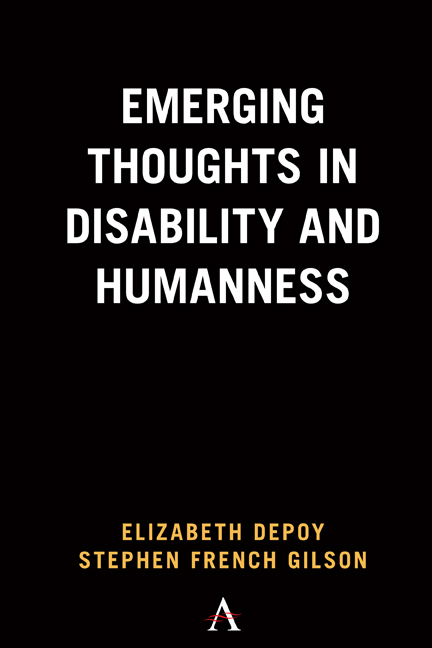Chapter 7 - The Visual Violator
Published online by Cambridge University Press: 13 May 2022
Summary
Any person who is diseased, maimed, mutilated, or in any way deformed so as to be an unsightly or disgusting object, or an improper person to be allowed in or on the streets, highways, thoroughfares or public places in the City of County of San Francisco, shall not therein or thereon expose himself or herself to public view—San Francisco “Ugly Law,” 1867.
—Smithsonian (n.d.)How the offending corpus and its assigned meanings are depicted in visual media (e.g., film, illustration, curated display, online imagery, visual symbol such as the international symbol of access, access to low vision, etc.) form the substance of this chapter. Violations enter via a number of doorways: the body itself, the objects surrounding it, the cartoon body, the contemporary moving pictures in the form of digitals, among many more.
Doorway #1: The body itself
As the organic seat of dehumanization, the body sits as object. According to Langton, equating the sum total of body with its appearance is a tool that easily locks or unlocks the portal to humanness (Langton, 2009). We introduced soothsayer Harlan Hahn (1988) in previous chapters, who saw a precise reflection of Langton's tenet in his nonambulatory body appearance serving as fodder for markdown (Rhode, 2010). His incisive anxiety pronouncements about the appearance of impairment, along with interpretations of the imagery, as distressing were ideas about the impaired body that exposed the objectified corpus beyond its sexuality (Rhodes, 2010). As Hahn theorized, aesthetic anxiety, the quickening, sickening feeling that one gets when looking at a visual image perceived as unsightly is further complicated with layers of existential dilemmas about the meaning of the vision. Questions provoked by even a surreptitious curious glancer without ever conversing with the object of the gaze might include:
Would I be able to live if I looked that?
What is life and function like for someone who looks like that?
What would the life I assume lived by that “unattractive person” be like for me?
Would anyone like me? Be attracted to me? Hire me, sit next to me?
What would others think of me when they looked at me?
Would I be pitied, feared, the object of laughter?
- Type
- Chapter
- Information
- Emerging Thoughts in Disability and Humanness , pp. 87 - 108Publisher: Anthem PressPrint publication year: 2022



